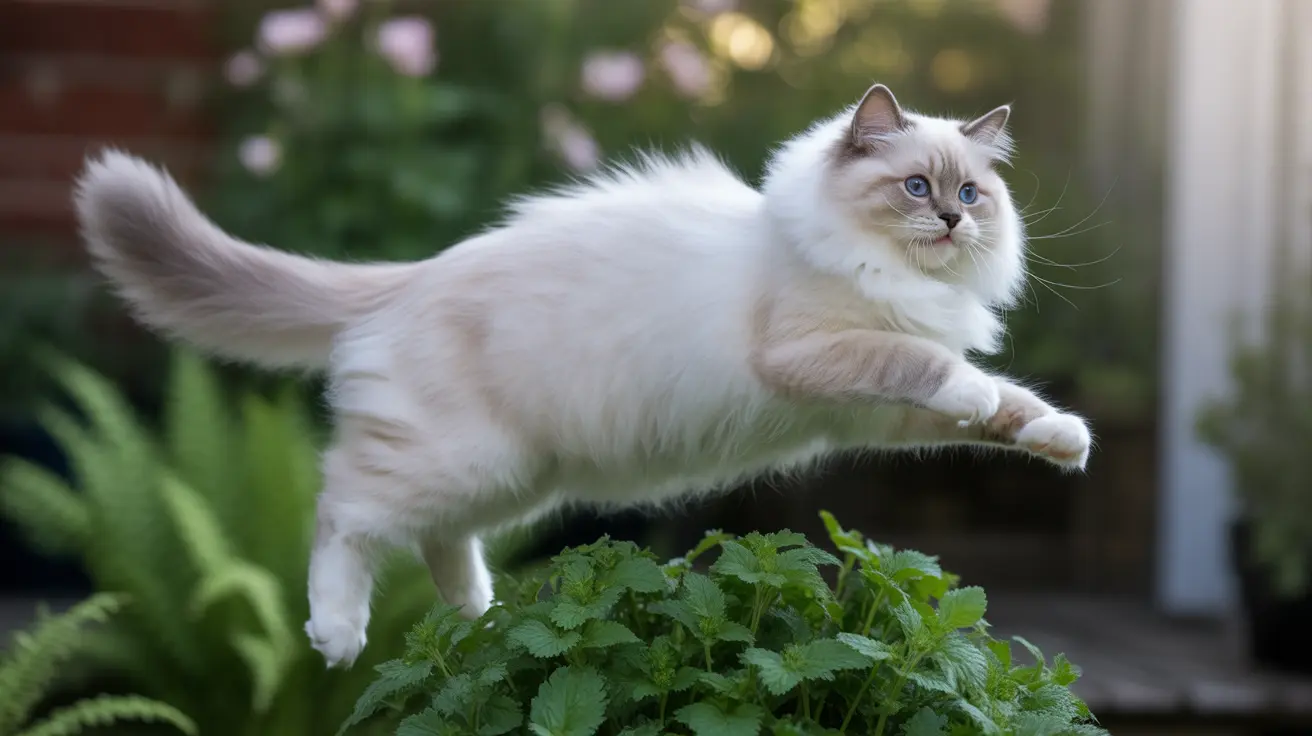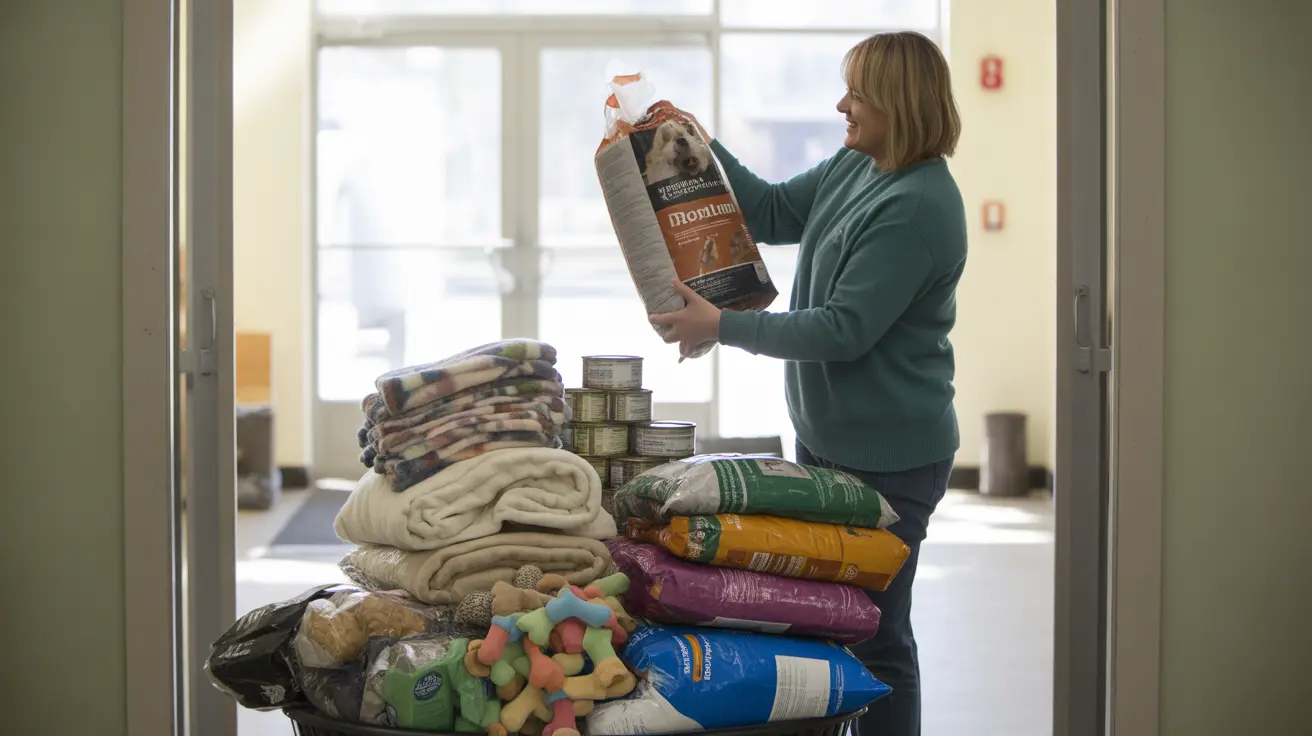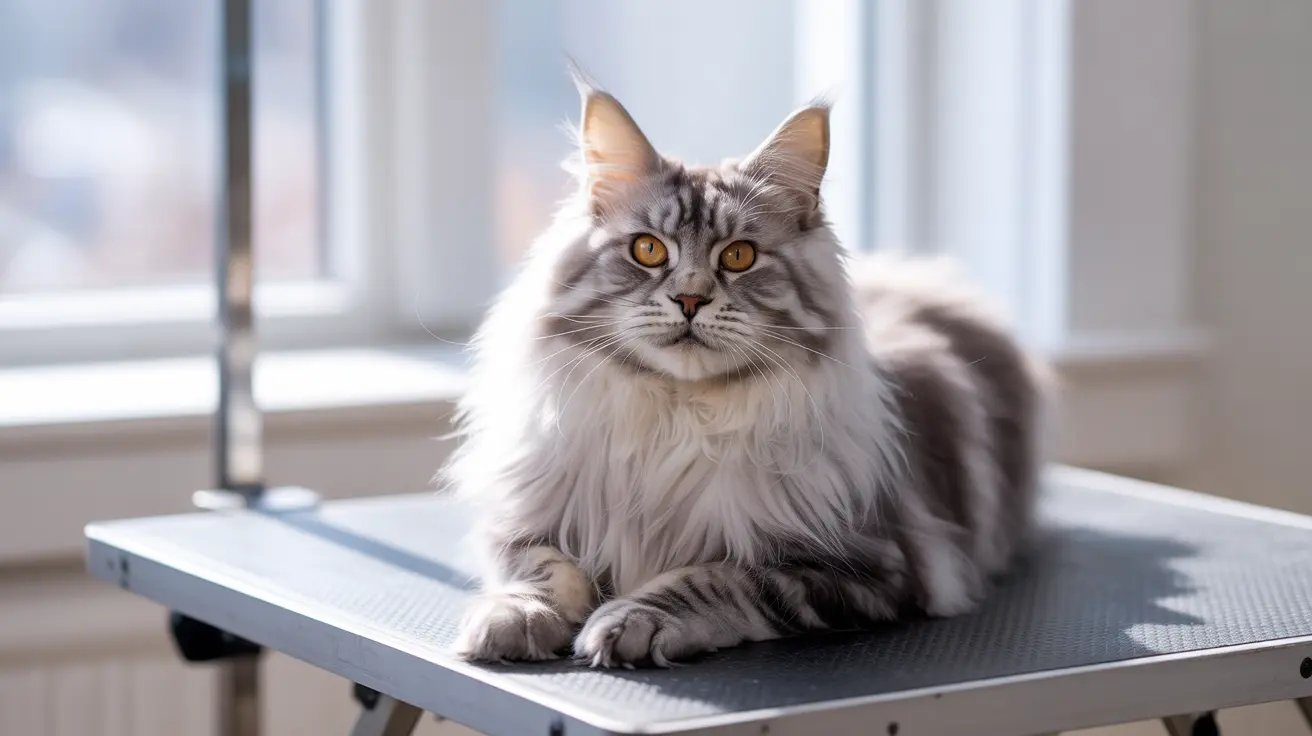Safe Garden Design for Outdoor Cats: Creating a Secure Paradise for Your Feline Friend
Creating a safe outdoor environment for your beloved cat doesn't mean sacrificing their natural instincts or your garden's beauty. With thoughtful planning and the right safety measures, you can design a garden space that allows your feline companion to explore, climb, and play while minimizing the risks associated with outdoor access. A well-designed cat-friendly garden provides mental stimulation, physical exercise, and natural enrichment that indoor environments simply cannot replicate.
The key to successful safe garden design for outdoor cats lies in understanding both feline behavior and potential hazards. Cats are natural climbers, hunters, and explorers who thrive when given opportunities to express these instincts safely. By implementing proper containment systems, choosing cat-safe plants, and creating enriching features, you can transform your outdoor space into a secure haven that benefits both you and your cat's wellbeing.
Essential Cat Containment Systems and Fencing
Installing Effective Perimeter Barriers
The foundation of any safe garden design for outdoor cats begins with proper containment. Cat fence barriers should be at least 1.8 meters (approximately 6 feet) high from the highest leap point, accounting for any raised flower beds, garden furniture, or structures near the fence that could serve as launching platforms. The most effective barriers incorporate an inward-curving design that prevents cats from gaining the momentum needed to escape.
Modern cat containment systems feature durable coated steel construction with rounded corners and no moving parts for maximum safety. These modular components can be adapted to various garden sizes and configurations, making them suitable for most residential properties. When installing barriers, ensure they extend from existing fences or walls, creating a continuous perimeter that eliminates escape routes.
Managing Trees and Elevated Access Points
Tree trunks or branches within 1.8 meters of your garden boundary require special attention in your containment strategy. Several cat-proofing options exist depending on tree size and proximity to fences. Consider installing additional barriers around tree bases or trimming branches that could serve as escape routes while maintaining the tree's health and your cat's climbing opportunities within the secure area.
Creating Safe Zones and Shelter Options
Designing Comfortable Retreat Areas
Cats feel vulnerable in wide open spaces and naturally seek smaller, more secure areas for safety. Break your garden into smaller sections using hedges, shrubs, or strategically placed planters to create intimate spaces where your cat feels protected. Position these elements near cat flaps or main entry points to help cats feel secure when first stepping outside.
Provide multiple shelter options throughout the garden, including covered areas for rain protection, sunny spots for warmth, and shaded retreats for cooling down. Garden furniture, purpose-built cat houses, and elevated platforms serve as excellent hiding places and resting spots. Even simple structures like small wooden boards arranged as teepees or garden umbrellas anchored on their sides can provide valuable security zones.
Establishing Vertical Territory
Cats naturally seek elevated vantage points to survey their territory and feel secure. Incorporate climbing opportunities using tables, chairs, trellises, pergolas, wall tops, and custom shelving to create vertical walkways throughout your garden. Logs, varied-sized platforms, or frames constructed from fence panels offer excellent climbing and surveying opportunities while keeping cats engaged and entertained.
Plant Selection for Feline Safety
Safe and Beneficial Plants for Cats
Choosing the right vegetation is crucial for safe garden design for outdoor cats. Cat-friendly plants not only eliminate toxicity risks but can actively enhance your cat's outdoor experience. Catnip and catmint are excellent choices that many cats enjoy lying in, biting, and chewing, often producing euphoric and playful behavior. Cat grass, typically common oats, provides another safe and appealing option that cats naturally gravitate toward.
Other safe plant selections include sweet potato vine, violets, gerbera daisies, marigolds, impatiens, magnolias, petunias, and basil. For larger landscaping features, consider crapemyrtle, rose of Sharon, camellias, spirea, and lilac, all of which are non-toxic to cats and can provide excellent shelter and climbing opportunities.
Plants to Avoid at All Costs
Certain plants pose serious health risks to cats and must be completely eliminated from your garden design. Lilies are particularly dangerous, as even small amounts can cause kidney failure in cats. Other toxic plants to avoid include sago palm, azalea, chrysanthemums, oleander, tulip bulbs, cyclamen, foxglove, and rhododendron.
Additionally, common food plants like onions, leeks, garlic, chives, and shallots should be avoided in cat-accessible areas. Even marijuana plants pose risks to curious cats who might nibble on vegetation. When in doubt, research any plant thoroughly before including it in your cat's outdoor space.
Water Features and Safety Considerations
Designing Safe Water Access
Providing fresh water sources enhances your cat's outdoor experience, as many cats prefer drinking from natural outdoor sources like rainwater collectors. Water bowls, fountains, or shallow ponds can serve as excellent hydration stations while adding visual appeal to your garden design.
However, water features require careful safety planning. Any ponds should include secure netting or ensure shallow access points that prevent drowning risks. Swimming pools must remain covered when not in use, and rain barrels require secure lids or access ramps that allow cats to escape if they accidentally fall in. Circulating water systems help prevent mosquito breeding while providing fresh, appealing water sources for your cats.
Eliminating Chemical Hazards
Creating a Chemical-Free Environment
Traditional garden maintenance often involves chemicals that pose serious risks to cats. Avoid using pesticides, herbicides, slug pellets, insect and rodent bait, de-icing salts, and harmful fertilizers in any area accessible to your cats. These substances can cause poisoning through ingestion, skin contact, or inhalation.
Replace harmful chemicals with organic alternatives such as diatomaceous earth or beneficial nematodes for pest control. Use natural fertilizers like compost and manure instead of chemical alternatives. For mulching, choose materials from pine, cedar, or cypress rather than treated or potentially toxic options.
Enrichment Features for Natural Behavior
Encouraging Natural Hunting and Play Instincts
A well-designed cat garden provides outlets for natural predatory behavior through environmental enrichment. Scatter dry food throughout the garden or use puzzle feeders to simulate hunting experiences. Plant insect-attracting species to provide opportunities for cats to chase flies and butterflies safely within your contained space.
Interactive play areas with wand toys, balls, and climbing structures encourage stalking, chasing, and pouncing behaviors. Cardboard boxes, tunnels, and varying textures add mental stimulation while supporting physical exercise needs.
Providing Scratching and Marking Opportunities
Cats need appropriate surfaces for claw maintenance and scent marking, essential aspects of feline territorial behavior. Provide scratching posts, wooden logs wrapped with sisal, or designated tree trunks for claw sharpening. Include various surfaces like gate posts and planters for facial rubbing, and allow natural urine marking areas in appropriate garden sections.
Toileting Facilities and Maintenance
Establish a purpose-built outdoor toilet area to prevent cats from using flower beds or inappropriate locations. A recessed litter box concealed under plants or bushes, filled with sand, wood chips, or standard litter, provides a comfortable and private toileting option. Ensure the area has good drainage and clean it daily to maintain hygiene and prevent odors.
Position toileting facilities in quiet, secluded areas where cats feel safe and secure. Multiple cats may require several designated toilet areas to prevent territorial conflicts and ensure adequate access.
Health and Safety Protocols
Pre-Outdoor Access Requirements
Before allowing garden access, ensure your cat is properly prepared with up-to-date immunizations and parasite control measures. Regular flea and tick treatments become essential for cats spending time outdoors, as does microchipping for identification if your cat somehow escapes your secure garden area.
Ongoing Safety Measures
Store all garden tools and chemicals safely away from cat-accessible areas. Avoid operating loud garden equipment when cats are present outdoors, as sudden noises can cause panic and potential injury. Regular health monitoring and veterinary checkups help identify any issues related to outdoor exposure early.
Technology and Monitoring Solutions
Modern technology offers additional safety options for outdoor cats, including GPS tracking collars, motion-activated cameras for monitoring garden activity, and automated feeding systems. These tools provide peace of mind while allowing cats to enjoy natural outdoor experiences safely.
Managing Neighboring Cats and Wildlife
Protecting Your Cat and Garden Visitors
Neighboring cats may enter your garden despite containment measures. Provide multiple safe places and resources to reduce stress from intruder cats. High fencing helps establish clear boundaries that your cat can patrol and mark as their territory. Consider patrol schedules during peak activity times to discourage unwanted visitors.
To protect local wildlife, consider using bells on your cat's collar to alert birds and small animals. Place bird feeders in areas inaccessible to cats, and provide plenty of enrichment activities to reduce hunting motivation.
Frequently Asked Questions
- Q: What height should my cat-proof fence be to prevent escapes?
Cat-proof barriers should be at least 1.8 meters (6 feet) high from the highest leap point in your garden. This measurement should account for any raised flower beds, garden furniture, or structures near the fence that cats could use as launching platforms. The most effective designs incorporate an inward-curving top section.
- Q: Which common garden plants are most dangerous for cats?
Lilies are among the most toxic plants for cats, potentially causing kidney failure even from small exposures. Other dangerous plants include sago palm, azalea, chrysanthemums, oleander, tulip bulbs, foxglove, rhododendron, and common food plants like onions, garlic, and chives. Always research plants thoroughly before including them in cat-accessible areas.
- Q: How can I provide safe water features in my cat garden?
Safe water features include shallow fountains, covered water bowls, and properly netted ponds with easy exit points. Swimming pools should be covered when not in use, and rain barrels need secure lids or escape ramps. Ensure any water feature allows cats to exit easily if they accidentally fall in, and use circulating systems to prevent mosquito breeding.
- Q: What should I use instead of chemical fertilizers and pesticides in my cat garden?
Replace chemical fertilizers with natural options like compost and well-aged manure. For pest control, use diatomaceous earth or beneficial nematodes instead of toxic pesticides. Choose organic mulch from pine, cedar, or cypress, and avoid any treated materials that could harm your cats through contact or ingestion.
- Q: How do I create an outdoor toilet area for my cat?
Build a purpose-built latrine using a recessed litter box filled with sand, wood chips, or standard litter in a quiet, secluded area where your cat feels secure. Ensure good drainage and clean the area daily. Position it away from food and water sources but in an easily accessible location that offers privacy.
- Q: What enrichment features should I include to keep my cat mentally stimulated?
Include climbing structures like logs and platforms, scratching posts or designated tree trunks, hiding places using garden furniture or purpose-built shelters, and interactive elements like puzzle feeders or scattered food to simulate hunting. Plant cat-friendly species like catnip and cat grass, and provide various textures and levels throughout the garden.
- Q: How can I prevent neighboring cats from entering my secure garden?
Use high fencing with inward-curving tops, ensure no visible escape routes, and provide plenty of resources and safe spaces for your cat to establish territory. Consider using scent marking through strategic placement of your cat's used litter, and maintain regular patrol schedules during peak activity times to discourage intruders.
Conclusion
Creating a safe garden design for outdoor cats requires thoughtful planning, proper containment, and ongoing attention to potential hazards. By implementing secure fencing systems, choosing cat-safe plants, eliminating chemical risks, and providing enriching features, you can offer your feline companion the benefits of outdoor exploration while maintaining their safety and security.
Remember that each cat has unique needs and preferences, so observe your pet's behavior and adjust your garden design accordingly. With proper preparation, including health protocols and safety measures, your cat can enjoy the mental stimulation, physical exercise, and natural enrichment that only a well-designed outdoor space can provide. The investment in creating a secure, cat-friendly garden pays dividends in your pet's overall wellbeing and quality of life.






